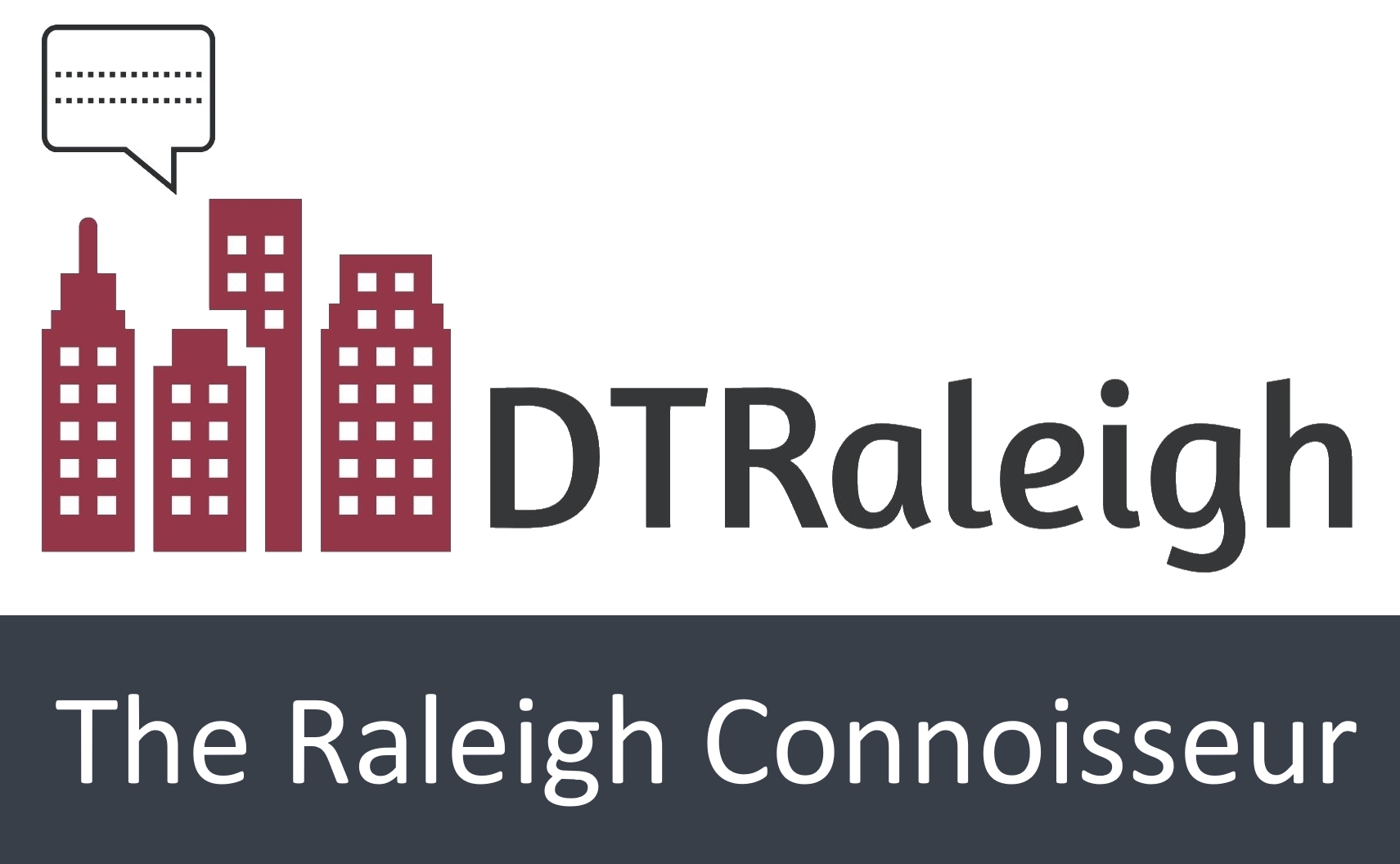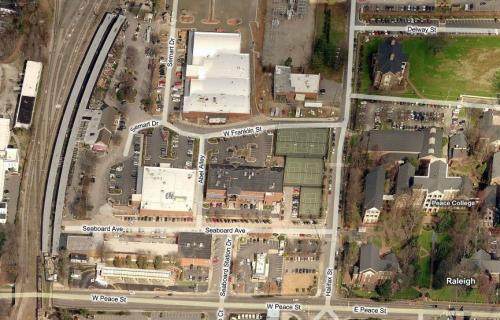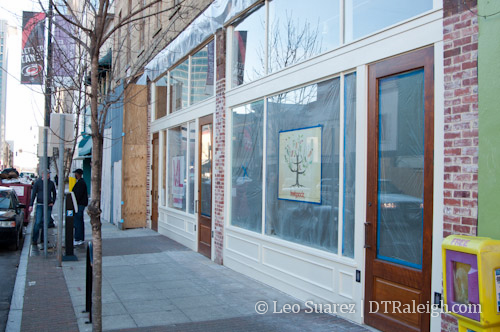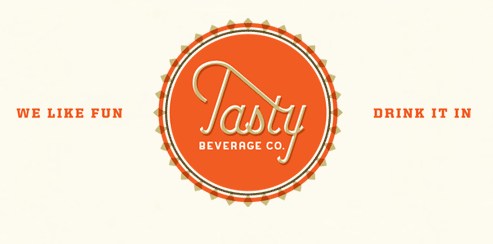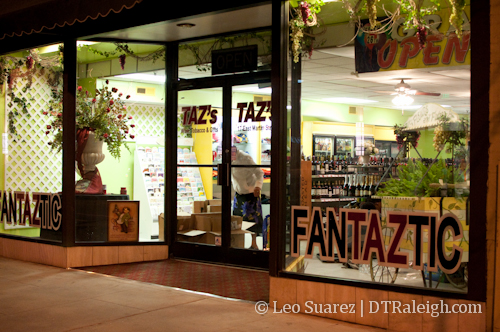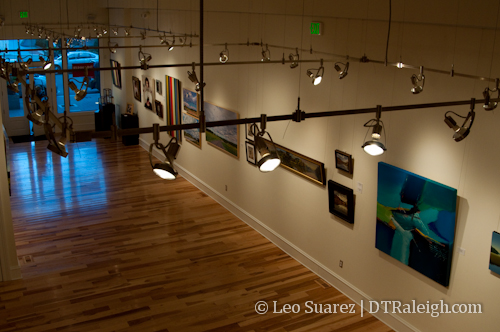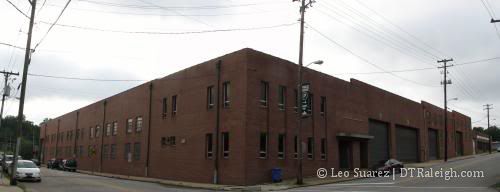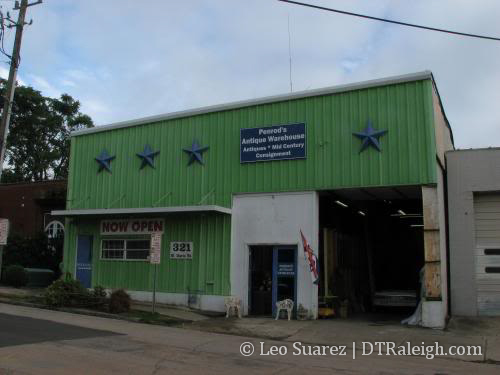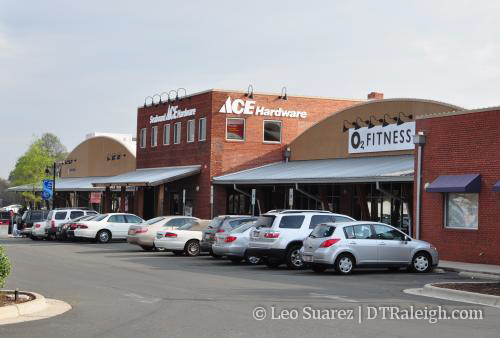
Seaboard Station sits at the northern end of downtown Raleigh and is a unique area compared to Glenwood South or Fayetteville Street. Over the last few years, the area seems to be riding with the downtown revitalization wave but there’s just something that’s holding it back. Why don’t people come to Seaboard and stay for awhile? I’ve always felt like the area was convenient for quickly getting there, but just the same, easy enough to get right out.
The Shops at Seaboard Station website plays on the locally owned theme of restaurants and services. 18 Seaboard and J. Betski’s have been serving at Seaboard for a few years now and the recently opened Tyler’s Taproom seems to be an instant favorite. While not included on their website, Sunflower’s needs a big nod for doing business here for almost thirty years.
In retail, Seaboard is creating a little variety for shoppers. Logan Trading Co. may be the anchor tenant and the family-owned garden shop has been open since 1991. Over the last few years, places like Seaboard Wine, Ace Hardware, and O2 Fitness have moved in to diversify the list of services.
But the most dramatic story in recent history may be what happened in 2007. A grocery store, Capital City Grocery, opened in Seaboard Station with high anticipation. The news was all over it, saying it was the pinnacle of downtown Raleigh’s re-birth. However, over time the hype died down and reviews were mixed about the store. For whatever reason, the grocery store closed and re-opened in 2008, only to close permanently later that year.
Around that same time, condo projects were even planned for Seaboard Station. The 111 Seaboard condos were planned along Seaboard Avenue but that project never came to be. Now, the empty building will not be razed for development but renovated for more retail spaces.
Today, Seaboard Station has a few new tenants in addition to the previously mentioned with plenty of empty space for more.

Empty Storefronts at Seaboard Station
The events, the largest probably being the Music on the Porch series during the warmer months, have been fine but what will it take for Seaboard Station to naturally be a hub of activity?
The area has some natural obstacles all around it. To the south, the black hole that is the state government complex will almost never contribute more than a steady lunch crowd. The customer base to the east is not growing much with Peace College and the Mordecai and Oakwood neighborhoods. The area is also cut off somewhat with the train tracks to the north and Capital Blvd to the west. The area is somewhat isolated.
Seaboard’s contribution to downtown is not urban at all so its suburban nature makes it compete with other places of similar style. The vast parking lots make it easier for cars to go in and out so it is now competing with other shopping centers around the city. If I have to drive to Seaboard Station, then why choose that area if getting to someplace better outside of downtown is just as easy now that I’ve made the decision to drive? You can see it in the map below.
In my opinion, Seaboard Station cannot do it alone and needs to be tied into a few other projects in order for it to be a place to stay awhile. The Blount Street Commons project that essentially stalled when the economy went bad a few years ago needs to be re-energized in some way. More residents need to move into the northern end of downtown to feed Seaboard. The Capital Blvd Corridor study will also be a huge factor in realizing Seaboard’s potential. This study also includes a Peace Street corridor redesign which could greatly improve Peace Street.
The location is great but the barriers are too restrictive at the moment for Seaboard Station. The current stop on the R-Line is another plus but even greater connectivity is needed for this area to feel like an integral part of downtown Raleigh.
